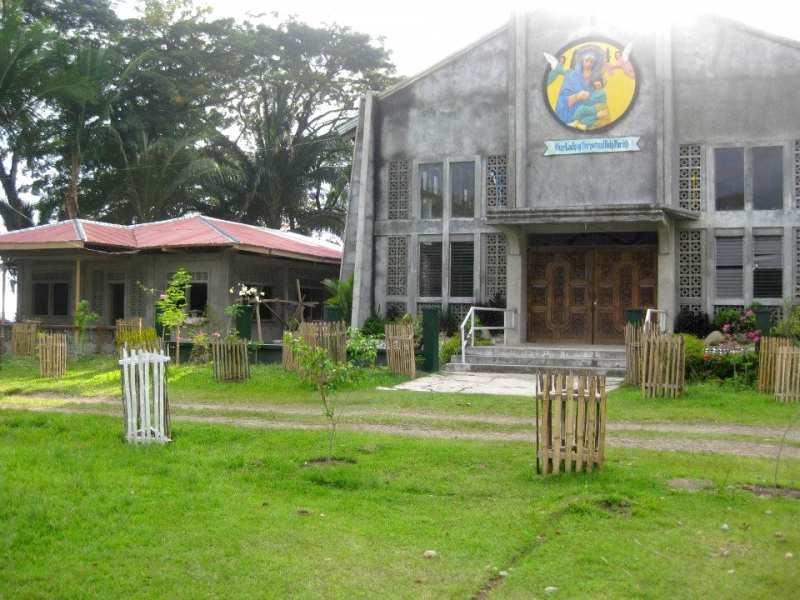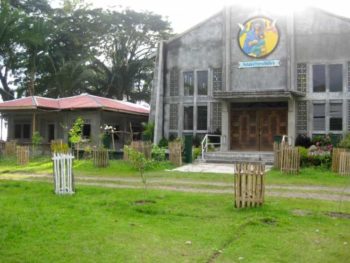 Photo courtesy milbuklegacy.com
Photo courtesy milbuklegacy.com
“Milbuk Parish”

Photo courtesy milbuklegacy.com
And so, together with my two confrères assigned at our Dominican community of St. Antoninus in Gen. Santos City, we embarked on a 3-hour road trip to Milbuk. Passing by the coastal towns of Maasim, Kiamba and Maitum in Sarangani Province, we reached “Milbuk Parish” (as what the signboard reads on the road side) shortly before sundown. Because of what was written on the signboard, we jokingly asked one another if anyone of us knows who “St. Milbuk” is!
Along the way, after Maitum, there were quite a lot of checkpoints, alternately by the Marines and the MILF (Moro Islamic Liberation Front). The road all the way to Milbuk is well paved. We passed by rice fields, banana and coconut plantations.
The parish church is situated within a compound together with Notre Dame of Milbuk High School. Beside the church are the rectory and the parish office facing the Celebes Sea across Jolo. Fourteen stations of the cross made of stones and metal poles about 20 feet high stand beyond the sea wall of the parish church’s compound, right on the seashore. The white crosses of each station which must be about 8 feet tall are about 10 meters apart. It occupies the whole stretch of the beach front area of the parish church compound. From out on the sea, the Stations of the Cross can be seen even from afar with the parish office, the rectory and the parish church on the background.
On one side in front of the beach is a huge acacia tree with a tree house on it. We had dinner under the big acacia tree, with an awesome view of the Celebes Sea on the horizon. Fr. Jun served us clamshell, “kinilaw” or raw fish with vinegar, ginger and onions and “budyong”, a kind of shell whose meat inside it is edible. With a sky that’s clear and was lighted by the stars and a full moon, we slept in tents pitched on the sand facing the sea and in the tree house up the acacia tree. I fell asleep with the sound of the waves gently brushing on the seashore.
The following morning, some men and women from San Roque GKK of the parish came by boat to fetch us for a picnic out to the sea. About 30 minutes boat ride from the parish church is a part of the sea that they call “Balasan”. It’s actually a sandbar that is visible when the tide is low and is submerged underwater when it is high tide. Around the sandbar are corals where various kinds of colourful fishes can be seen. There were also starfish, sea eel and sea urchins. We spent a couple of hours strolling on the sandbar, taking pictures and snorkelling in the crystal clear water over the corals. By noon time, we had lunch on the boat – freshly grilled fish and squid and fish “kinilaw”.
When we got back to the parish church, I had siesta on a hammock which I fixed under the big acacia tree. By late afternoon it started to drizzle and Fr. Jun invited me to go out to the sea on a small wooden boat. He went out to dive for “swaki” – another kind of sea urchin which we had for dinner.


No Comments